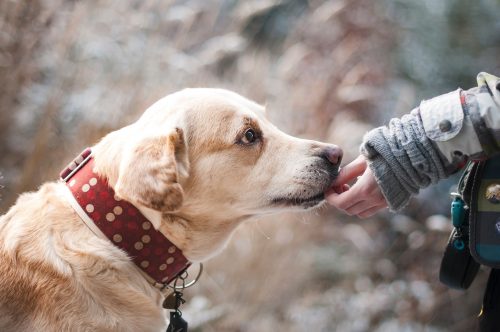Finding out your dog has cancer is a heartbreaking message no pet owner wants to hear; however, the unfortunate reality is that one in three dogs will be impacted by cancer. Although “cancer” is a word we have all learned to fear, there are positive methods to both treat your pet and ensure they are as comfortable and happy as possible.
Even though this is a difficult time for you as a pet owner, it is important to remember that you are your dog’s caretaker and support system, so it is up to you to manage their condition. There are a number of treatment options and strategies for cancer in dogs to make your dog more comfortable in order to keep man’s best friend relaxed and at-ease.
Observation
The first step in treating or alleviating pain in your pet is to identify the issue. The way to do this is by observing changes in your pet’s behavior or signs of pain. Dogs are creatures of habit, so if you notice that your dog has strayed from his or her usual routine, it is a good idea to consult a veterinarian.
Similarly, if your dog is exhibiting symptoms of pain such as lethargy, hesitation to go on walks, or difficultly with regular movements, you should consult a professional. From here, your veterinarian will be able to determine what is causing the problem and if it is in fact cancer.
Consultation and Education
It is important to consult a veterinarian because there are multiple types of canine cancer and treatment will vary based on both the form of cancer and stage your canine companion is in. Your veterinarian may recommend you take your dog to see an oncology specialist, or your veterinarian and their team may be able to guide you through the process themselves.
From here, your veterinarian will educate you on the options you and your dog have moving forward. This will be unique based on your personal preferences and the state of your dog’s health. In terms of treatment, there are a variety of chemotherapy methods for dogs as well as radiation therapy.
The goal in these cases is to get your dog into remission. However, sometimes due to the stage of cancer, logistical complications, and financial hardships, the best option for you and your dog may be to make your dog comfortable. Your veterinary team will understand the emotional stress you are experiencing and will do their best to educate you on treatment options and lifestyle changes you can make to keep your furry friend as happy as possible.
Medication & Alternate Supplements
Whether you opt for traditional medicine or natural remedies, some form of medication will be important during this time to keep your pet healthy and the pain level low. Your veterinarian can prescribe medication based on your pet’s type of cancer and health state.
Medication may come in the form of pills, shots, or dietary supplements. Your veterinarian can teach your how to administer these if you are comfortable giving your dog the recommended form of treatment. With medication, it is essential that you stay on top of your pet’s treatment schedule.
Do this by keeping a medication log. This will help you stay on track and keep your pet’s health stable. In addition to medication, you may be required to take your dog’s temperature, administer fluids, and monitor his or her breathing. All of these factors will be specific to your dog’s unique case, but these are some routines to prepare yourself for.
Many pet owners do not observe results with traditional medicine and choose to look to natural remedies for dogs with cancer to alleviate their dog’s pain and health complications. Oftentimes, prescribed medication can become too costly and other times dogs will react to medication with negative side effects.
To combat this, try vitamins and herbal supplements as an alternative to traditional medicine. These natural approaches can be extremely effective in both relieving pain, and boosting overall health. Regardless of what medication method you choose, remember that pain and heath management is important during this time.
Lifestyle Changes
There are a number of lifestyle changes you and your four-legged friend can adopt to keep your dog comfortable. One of the best changes you can make for your dog is a change in diet. Many store-bought pet foods are high in carbs, low in protein, and lack essential vitamins and Omega fatty acids. Consider switching your dog to a more natural, vitamin rich diet.
Another lifestyle change you may need to make is in regards to your dog’s mobility. When your dog has cancer, it sometimes becomes difficult or painful for them to move too much. In this case, consider getting your dog an eggshell or orthopedic bed. The more comfortable the resting place, the better.
If your dog is experiencing extreme difficulty using his or her legs, look into getting a doggy “wheelchair” for walks. This can be a great option because it allows dogs to still have fun going on walks even when their bodies can no longer adequately support them. Another lifestyle change you may need to consider is making spaces more accessible for your dog. If they have trouble with steps, try building a ramp for easier access. An easy lifestyle change is bringing your dog’s essential items such as bedding, food, and water closer to them so that they do not have to walk as far.
No dog owner wants to hear that their beloved companion has cancer, but if you are faced with the hardship, know that there are treatments to help your furry friend. No matter what treatment or medication option you select, the most important thing to do is keep a watchful eye on your dog and ensure that you are taking steps to keep their quality of life as high as possible.






